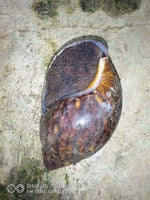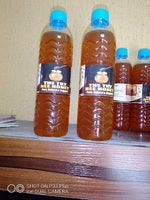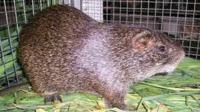Post by Ismail AbdulAzeez on Jun 17, 2017 19:58:14 GMT 1
Castration involves the destruction of testicular function, the testicles being the two organs that lie together in the ram’s scrotum.
Methods of castration includes: The knife method – The scrotum is cut open and both testicles removed by knife.
Burdizzo Method: The spermatic cord connecting the testicles with the rest of the body is crushed mechanically with a pair of heavy and blunt pincers thereby leading to slow degeneration and eventual complete altrophy (withering) of two testicles in the un-opened scrotum.
Elastration: A strong rubber ring is fitted over the lamb’s scrotum and left there until the whole scrotum atrophies and falls off. The male sheep becomes a wether or wedder having lost all sexual power and desire.
Housing: The main reasons why goats are housed are to make management easier, reduce kid/adult mortalities as well as reduce predation/theft. Goats should be housed to protect them from bad weather, for example, rain, sun and wild wind. Each adult goat should be allowed a floor space of 1.5m2. For example if one has 10 goats then the house/pen should be 1.5 by 10, which is 15m2.
Types of Housing
a.Walled and Roofed – Attributes: The wall is usually up to one metre high, well ventilated, protect goats from wetness during rainy season, easy to clean and warm.
b.Raised floor with wooden walls, flat roof and a feeding area – Attributes: Warm and easy to clean, animal can be fed at the pens, floor is well drained resulting in reduced foot rot incidences. This is usually ideal for small to medium size flocks.
c.Poles Only With No Poles – Attributes: Well ventilated, floor get wet and increase foot rot cases, cheap to construct. Expose animals to rain, heat, cold and draughts. These structures can be upgraded.
Dentition Management: Dentition is often used to determine the ages of goats. Goats have no teeth in the upper jaw but have eight front teeth (incisors) in the lower jaw. Towards the back of the month goats have large teeth called molars used for chewing.
In goats less than one year the front teeth are small and sharp. This is the milk tooth stage. At one year the centre pair of teeth drops out and two large ones replace them. This is the two tooth stage. At about two years to the next, two small teeth (one on each side of the first centre pair) drop out and two large ones emerge. This is the four tooth stage.
At 3-4 years the next set drops out again and two large ones also emerge; this is the six tooth stage.
At 4-5 years the last two milk teeth drop and two large ones emerge, the goat will now be having eight permanent teeth. This is called the full mouth stage.
As the animal grows older (from six years onwards) the teeth start to wear off, spread apart, become loose and finally drop off. Farmers must note that at two tooth to six tooth the castrates can be marketed. Start culling at broken mouth stage for does and bucks.
Nutritional Management: Goats are natural browsers but they do also graze. They are however selective in their feeding behavior and they do well where they on variety of feeds. Their main feed is shrubs, bushes (and wild fruit/pods) and grass.
The quantity of feed consumed by a goat depends on: age, breed, sex, size and physiological status (pregnant/lactating).
A goat farmer must therefore note that: goats will consume about 3-5% of their own body weight in dry matter daily, young goats will consume relatively more than mature goats, pregnant and lactating goats will require more feed to produce milk and to enable the foetus to grow and their types of feeds include the compound feeds, straight feeds as well as supplements.
Problems Encountered in Feeding
Bloat: Feeding leguminous feeds which are high in nitrogen content causes bloat, which is the accumulation of gases in the stomach. If animals are unattended to in good time they may die. Other problems are acidosis bladder stones plant poisoning (Unphaphapha).
Fodder Production and Conservation: The major constraint to livestock production is the unavailability of sufficient feed, especially during the dry season. The rangelands do not provide adequate (quantity and quality) feed throughout the year to support goat production. Therefore it is necessary to produce fodder crops as supplementary feeding during the dry season.
Fodder Crops: These are crops that are grown for livestock feeding. They can be fed while still fresh or preserved. Goats needs balanced diet comprising of water, carbohydrates, protein, vitamins, minerals and fibre.
Methods of castration includes: The knife method – The scrotum is cut open and both testicles removed by knife.
Burdizzo Method: The spermatic cord connecting the testicles with the rest of the body is crushed mechanically with a pair of heavy and blunt pincers thereby leading to slow degeneration and eventual complete altrophy (withering) of two testicles in the un-opened scrotum.
Elastration: A strong rubber ring is fitted over the lamb’s scrotum and left there until the whole scrotum atrophies and falls off. The male sheep becomes a wether or wedder having lost all sexual power and desire.
Housing: The main reasons why goats are housed are to make management easier, reduce kid/adult mortalities as well as reduce predation/theft. Goats should be housed to protect them from bad weather, for example, rain, sun and wild wind. Each adult goat should be allowed a floor space of 1.5m2. For example if one has 10 goats then the house/pen should be 1.5 by 10, which is 15m2.
Types of Housing
a.Walled and Roofed – Attributes: The wall is usually up to one metre high, well ventilated, protect goats from wetness during rainy season, easy to clean and warm.
b.Raised floor with wooden walls, flat roof and a feeding area – Attributes: Warm and easy to clean, animal can be fed at the pens, floor is well drained resulting in reduced foot rot incidences. This is usually ideal for small to medium size flocks.
c.Poles Only With No Poles – Attributes: Well ventilated, floor get wet and increase foot rot cases, cheap to construct. Expose animals to rain, heat, cold and draughts. These structures can be upgraded.
Dentition Management: Dentition is often used to determine the ages of goats. Goats have no teeth in the upper jaw but have eight front teeth (incisors) in the lower jaw. Towards the back of the month goats have large teeth called molars used for chewing.
In goats less than one year the front teeth are small and sharp. This is the milk tooth stage. At one year the centre pair of teeth drops out and two large ones replace them. This is the two tooth stage. At about two years to the next, two small teeth (one on each side of the first centre pair) drop out and two large ones emerge. This is the four tooth stage.
At 3-4 years the next set drops out again and two large ones also emerge; this is the six tooth stage.
At 4-5 years the last two milk teeth drop and two large ones emerge, the goat will now be having eight permanent teeth. This is called the full mouth stage.
As the animal grows older (from six years onwards) the teeth start to wear off, spread apart, become loose and finally drop off. Farmers must note that at two tooth to six tooth the castrates can be marketed. Start culling at broken mouth stage for does and bucks.
Nutritional Management: Goats are natural browsers but they do also graze. They are however selective in their feeding behavior and they do well where they on variety of feeds. Their main feed is shrubs, bushes (and wild fruit/pods) and grass.
The quantity of feed consumed by a goat depends on: age, breed, sex, size and physiological status (pregnant/lactating).
A goat farmer must therefore note that: goats will consume about 3-5% of their own body weight in dry matter daily, young goats will consume relatively more than mature goats, pregnant and lactating goats will require more feed to produce milk and to enable the foetus to grow and their types of feeds include the compound feeds, straight feeds as well as supplements.
Problems Encountered in Feeding
Bloat: Feeding leguminous feeds which are high in nitrogen content causes bloat, which is the accumulation of gases in the stomach. If animals are unattended to in good time they may die. Other problems are acidosis bladder stones plant poisoning (Unphaphapha).
Fodder Production and Conservation: The major constraint to livestock production is the unavailability of sufficient feed, especially during the dry season. The rangelands do not provide adequate (quantity and quality) feed throughout the year to support goat production. Therefore it is necessary to produce fodder crops as supplementary feeding during the dry season.
Fodder Crops: These are crops that are grown for livestock feeding. They can be fed while still fresh or preserved. Goats needs balanced diet comprising of water, carbohydrates, protein, vitamins, minerals and fibre.












